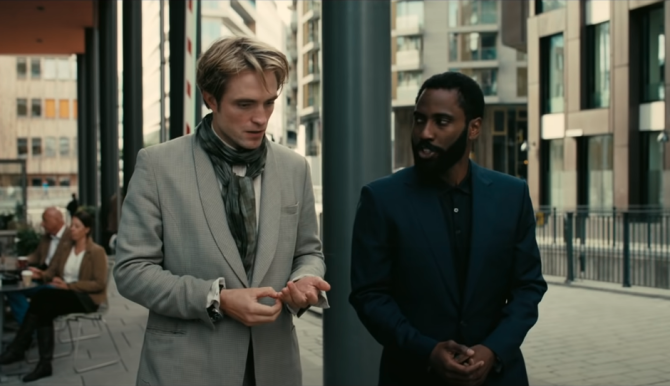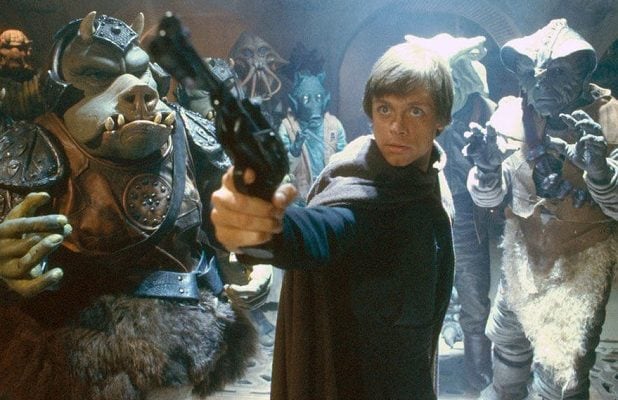I was thinking back to one my top 5 ever movie scenes, the opening scene in Fargo where Jerry meets the two criminals in the bar to solidify the job he’s hired them for – kidnap his wife.
The dialogue in that scene, while not as vibrant or quote-worthy as, say, a Tarantino scene, is still great. And the reason it’s awesome is because there’s so much tension in the interaction. Jerry wants something. The two kidnappers don’t like the way it’s being handled and are, therefore, putting up resistance. “Shep said you’d have the 40 thousand for us now.” “No,” Jerry says. “See, I’m going to give it to you later, in the ransom.”
More recently, I was watching a scene in the Amazon show, The Marvelous Mrs. Maisel. Midge’s mother had left the family to start a new life in Paris. Midge and her father go there to bring her back. They find her in a run-down apartment she rented. Similar to the scene in Fargo, the dialogue doesn’t have any lines the college crowd is going to be quoting. But the dialogue throughout the scene is strong because they’re trying to get her to come back with them and she’s having none of it.
Around this point I had a minor revelation. One of the keys to writing a good dialogue scene isn’t just establishing a character objective. Yes, that helps. If you *don’t* give your character an objective, the scene will feel pointless and your characters will prattle on like a couple of homeless people discussing the CIA. The key is that in addition to establishing the objective, YOU MUST THEN MAKE YOUR CHARACTER WORK FOR IT.
I used to make this mistake all the time without realizing it. I would put two characters in a scene. One (usually my hero) would have an objective. Technically, the scene should’ve worked. But so many of my scenes were still dull. Every once in a while one would work and I’d wonder, “Why is this one good and all the others suck?” I could never figure it out and began to chalk it up to luck.
I finally realized that I was never making my character work for their objective. Instead, my “objectives” were “objectives in name only.” I inserted them because the screenwriting books said it’s something I had to do. But I never saw any of these as “real” objectives. They were thrown in there to make things interesting, to give the scene some extra pop.
That’s actually one of the biggest violations I see writers make. They write what can technically be described as “resistance” to an objective. But it’s not true resistance. The reader doesn’t doubt for a second that the hero is going to get what he wants. This “false resistance” is why scenes that technically should work do not.
It happened in Tenet a lot, which is probably why so many people found the film boring. There’s a scene about 30 minutes into the movie that highlights one of the better attempts Nolan makes at true resistance to the hero’s objective.
It occurs when the Protagonist (that’s his name in the film) has to impress a woman named Kat in order to get an audience with the Russian oligarch he’s trying to take down (Kat is the Russian’s wife). Kat is an art connoisseur so he brings her a famous painting, parlaying that into a dinner where he makes his pitch to meet her husband.
Kat tells the Protagonist it ain’t going to happen (resistance!). Her husband is too big time and his men are going to beat the hell out of you just for meeting with me so… sorry. There is resistance here, obviously. But I didn’t doubt for a second that the Protagonist wasn’t going to meet the Russian.
That’s the difference between true resistance and false resistance. With true resistance, the reader will have legitimate doubt that the hero will be able to achieve his objective.
One of the better examples of this occurs in Return of the Jedi. Luke Skywalker comes in to retrieve his old buddy, Han Solo, from Jabba the Hut. Even though Luke is a freaking Master Jedi, we still doubt that he’s going to succeed. The pivotal moment when that doubt sets in is when Luke waves his hand to Jedi mind-trick Jabba into giving him his friends and Jabba LAUGHS. He doesn’t fall for Jedi nonsense.
If you think about it, that’s one of the more memorable scenes from the film and I believe that’s why. They conveyed genuine doubt that the hero was going to achieve his objective. And think about how much Luke had to do to eventually save his friends and escape Jabba. It was a huge ordeal. The resistance was real.
Which brings us back to topic of the article.
If you want a scene to shine, you must not only introduce a character objective. You must make them earn the objective. Or else what are we doing here? We’re just handing out lollipops to our hero whenever he needs one. Where’s the drama in that?
You should not only incorporate this tool into the entirety of the scene but within the scene, all the way down to individual questions. If your hero is a detective investigating a murder and he meets a person of interest and asks them the question he needs answered – Who do you think killed Frankie? – do not, under any circumstances, have that character answer the question right away.
MAKE YOUR HERO EARN IT.
“I’m going to cut straight to the chase. Who do you think killed Frankie?” “I just started a pot of coffee. Would you like some?” “No. I want to know who killed Frankie.” “Be back in a second. Sit down. Make yourself at home.” She disappears into the kitchen.
You see what’s going on here? We’re making the hero earn the answer to their question. And you better believe when this woman comes back with three cups of coffee that she’s going to bring up anything but Frankie. Which is exactly what you want. You want your hero to have to steer her on course and get the answer to that question. The more doubt you can inject into the scene that your hero is going to get his answer, the better.
Remember, if characters are constantly conversing freely, that’s not going to read well. Because all they’re doing, then, is exchanging information. “This is what I think.” “This is what I think.” “That’s an interesting perspective.” “So is your perspective.” There’s no drama in that type of exchange. There’s no uncertainty. And while there are situations where you can get away with it (in a comedy with two funny characters, for example) it’s usually a recipe for boredom.
One final point. Boring dialogue is rarely about the words themselves. Sure, interesting words, clever phrasing, strong anecdotes – these things can help dialogue. But the main reason a scene of dialogue doesn’t work is because you didn’t set up a scenario that allowed your characters to talk to each other in a way that’s entertaining to a third party. And that’s what “Make’em Earn It” is. You’re ensuring that every time your hero goes into a conversation, they’re going to have to earn the outcome they want. It’s never going to be handed to them. That alone is going to improve your dialogue dramatically.
Give it a shot in your latest script and let me know how it goes in the comments!



